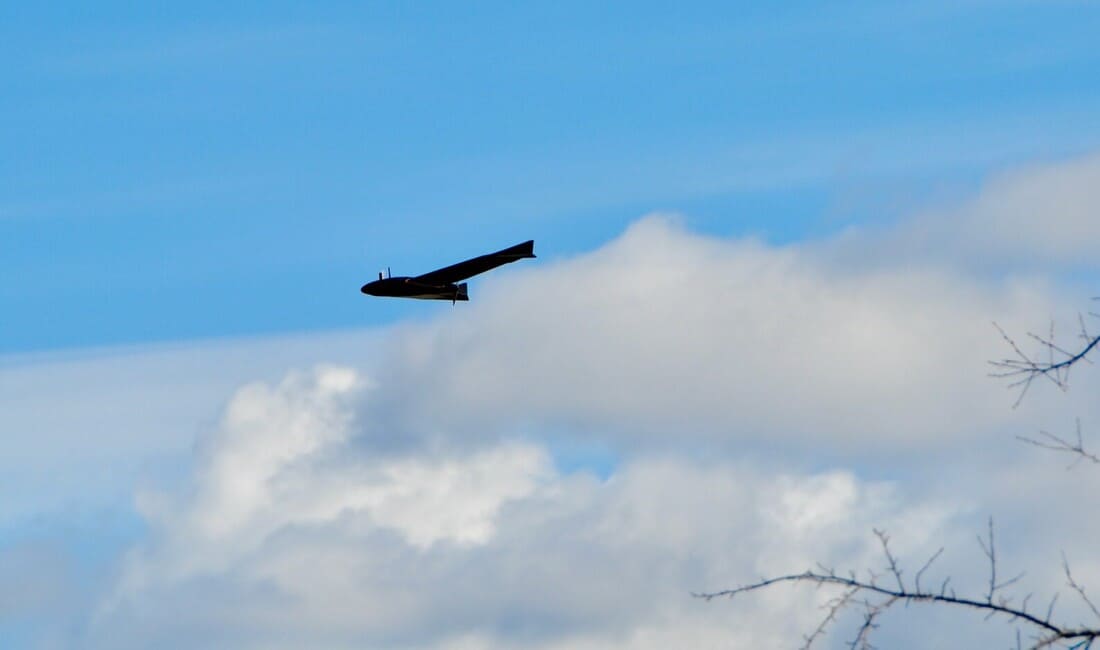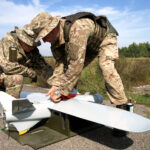Russian authorities have formalized a nationwide “dronification” rating that scores regions on progress in unmanned aviation. Officials presented pilot results in June, then spent the autumn refining the method for a nationwide rollout in 2026. Ministries told regional leaders to plan around the rating next year.
How The Dronification Rating Works in 2025
The pilot covered 47 regions and used two pillars, five groups, and 25 indicators. One pillar evaluates a region’s capacity to host large drone operations: “open sky” access, industry infrastructure, workforce, and financing. The second pillar tracks both potential and actual use of unmanned systems across the regional economy. Transport officials said the pilot logged more than 160 use cases in 21 sectors, including agriculture, construction, logistics, and emergency response.
Deputy Industry and Trade Minister Vasily Shpak stated the priority. “The key factor of success in dronification is open sky. Without it, flights are impossible,” he said when the ranking was unveiled. He also cited economic payback and public competitions as tools to popularize drone use.
Officials said the rating will be updated every year. Indicator definitions will be tuned and, if needed, aligned with federal performance assessments for senior regional executives to keep incentives clear where bottlenecks appear.
Top Regional Performers
Kaluga, Ryazan, Bashkortostan, Sakhalin, and Samara formed the leading cohort in the pilot. Common traits show up across those places: a working airspace permission process, active fleets in public services and industry, and a visible operator pipeline.
St Petersburg ranked twelfth overall but led the infrastructure sub-score. The Moscow region placed ninth in one breakdown reviewed by analysts, consistent with a pattern where large industrial regions clustered just behind the leaders.
Kaluga and Ryazan point to local OEMs and service firms as anchors. Bashkortostan expanded procurement for public agencies and nurtured integrators and training programs. Sakhalin built a uniform flight-clearance process that operators say cuts waiting time. Samara highlights assembly work and education tracks tied to a dedicated plant.
Mandatory Participation Beginning 2026 and Federal Vocational Training Standards for External Pilots
Officials said participation becomes mandatory in 2026. Territories the Kremlin labels “new regions” remain outside the scope. The stated goal stays civilian according to officials.
A workforce piece has been added. “External pilot” now appears in the federal list of professions eligible for formal vocational training. Schools certified by the civil aviation regulator can qualify operators for systems above and below 30 kilograms. That gives regional centers a legal way to expand instruction. Industry notices also point to planned attestation rules with theory and hands-on checks that echo manned-aviation licensing standards.
Education authorities had already moved earlier. A January 2024 note laid out a plan to equip schools and colleges in dozens of regions for UAV curricula, with workshops, test areas, and basic labs. The scoreboard’s focus on staffing and skills will force those tracks to report uptake and placement more consistently.
Regional authorities and company partners created extracurricular and pre-professional courses for teenagers. Several programs advertise eight-month cycles that combine assembly, coding, and flight safety. Independent investigations raised questions about parts of this ecosystem, yet Moscow continues to present the training push as a civilian, economic project. Defense officials confirm the rating is in the civilian column and is meant to normalize daily use in public services and industry.
Civilian Label and Strategic Dual-Use Drone Capacity Across Russian Regions
Ministries describe the rating as an economic development tool. The method measures building blocks any operator can use according to industry sources. Airspace procedures that enable deliveries and inspections also enable long-range reconnaissance. Warehouses, repair depots, and launch sites are not tied to a single payload type. Capacity built for civilian service can be redirected in a crisis, according to industry sources.
Deployment examples in the pilot material include agriculture, pipeline monitoring, mapping, and search-and-rescue. The transport ministry’s packet lists “readiness of scenarios” and “realization of market potential” as evaluation items. The point is to move beyond demos into paid service.
Shpak’s public remarks kept the emphasis on economics. He described procurement of drones and services by regional administrations, plus competitions and public events to sustain demand. His first point was airspace. Without predictable access, none of the rest expands.
The national project for unmanned aircraft systems, approved at the end of 2023, allocates about 696 billion rubles through 2030. Targets tied to the plan call for annual civil-drone output in the tens of thousands by decade’s end, along with support for service procurement and research infrastructure.
Geography matters for use cases. Island and Far East regions stress maritime and river tasks. Western industrial hubs tie drones to construction oversight and land surveying. Energy-heavy regions lean on emissions monitoring and perimeter patrols. The scoring groups reward places that write stable rules, train external pilots, and keep flying beyond pilot projects.
Regulatory Refinements and Regional Incentive Structure for Mandatory 2026 Expansion
Officials say the method will broaden next year. A summer agenda item under the “Archipelago-2025” intensive sets a workstream to tune indicators with outside experts and reduce ambiguity. Firms want ground, maritime, and aerial systems judged under one logic, and regulators signaled they will try.
According to industry sources, operators and integrators welcomed clearer definitions for “open sky,” including electronic identification and corridor reservations. Some push for template municipal contracts for recurring services such as land surveys, road inspections, and fire patrols. That would give small companies steadier cashflow and document “applied use” in the score.
Evaluators want transparent feedback loops so regions can see why a score moved. The goal is to motivate local authorities to build infrastructure and a viable service market, not to punish laggards. Officials confirm they will share explanations with participants to speed fixes.
Two near-term decisions intersect with the score. Participation becomes mandatory in 2026. Indicator updates will be annual. That lets the table react to changes in airspace rules and training law without waiting for a new decree.
Kaluga reports more than a hundred documented use scenarios and local manufacturers that can support maintenance and fleet refresh. Ryazan emphasizes ag-tech and environmental monitoring. Bashkortostan says it is expanding civilian procurement for forestry and emergency services and courting federal backing for a test and competence center. Sakhalin promotes its unified flight-clearance system. Samara points to an assembly site and an education-industry loop around it.
Two pending regulatory pieces could move scores in 2026. The civil aviation regulator and the transport ministry are piloting remote identification tools and discussing forced-landing mechanisms near restricted zones. Officials say these changes will keep corridors open for legitimate operators and give security services tools to intervene when needed. If adopted into federal aviation rules, many regions would gain points in the “open sky” group without adding new fleets.
Procurement sits next to regulation according to industry sources. Speakers tied to the state leasing company and sector agencies discussed standard contracts for municipal and regional services. If scaled, those deals create a baseline of hours flown and invoices paid that the scoreboard can capture under “applied use.” Officials have also discussed linking some subsidies to movement in a region’s rating to push airspace opening and pilot training faster, according to industry sources.
Training thousands of certified external pilots, opening corridors, and building depots will lift civilian services. The same choices raise dual-use capacity.
Our analysis shows mandatory participation in 2026, the formal status for external pilots, and the early set of regional leaders point to steady normalization of unmanned aviation across Russia’s regions rather than a single flagship project. The rating will track whether regions make it easier to fly, hire, and maintain fleets, and whether those fleets work beyond demos.
REFERENCE SOURCES
- https://mintrans.gov.ru/press-center/news/11934
- https://www.fontanka.ru/2025/06/18/75602864/
- https://tass.ru/ekonomika/24256669
- https://interfax.com/newsroom/top-stories/114544/
- https://ict.moscow/analytics/reiting-dronifikatsii-rossiiskikh-regionov/
- https://www.comnews.ru/content/239743/2025-06-19/2025-w25/1007/reyting-opredelil-dronovuyu-prodvinutost-regionov-rf
- https://news.ru/vlast/rossijskie-regiony-budut-sravnivat-po-dronifikacii
- https://aeronext.aero/press_room/regulation/223795
- https://www.cnews.ru/news/top/2025-09-09_operatoram_bpla_pridetsya
- https://edu.gov.ru/press/8049/v-2024-godu-v-30-regionah-shkoly-i-kolledzhi-osnastyat-dlya-obucheniya-rabote-s-bespilotnymi-aviacionnymi-sistemami/
- https://i-regions.ru/eng/press-sluzhba/novosti/the-association-of-innovative-regions-of-russia-held-a-series-of-events-on-the-development-of-unmann
- https://spbdnevnik.ru/news/2025-06-18/minpromtorg-rossii-predstavil-pervyy-reyting-dronifikatsii-regionov-na-pmef
- https://gazeta.ru/social/news/2025/06/18/26061800.shtml



